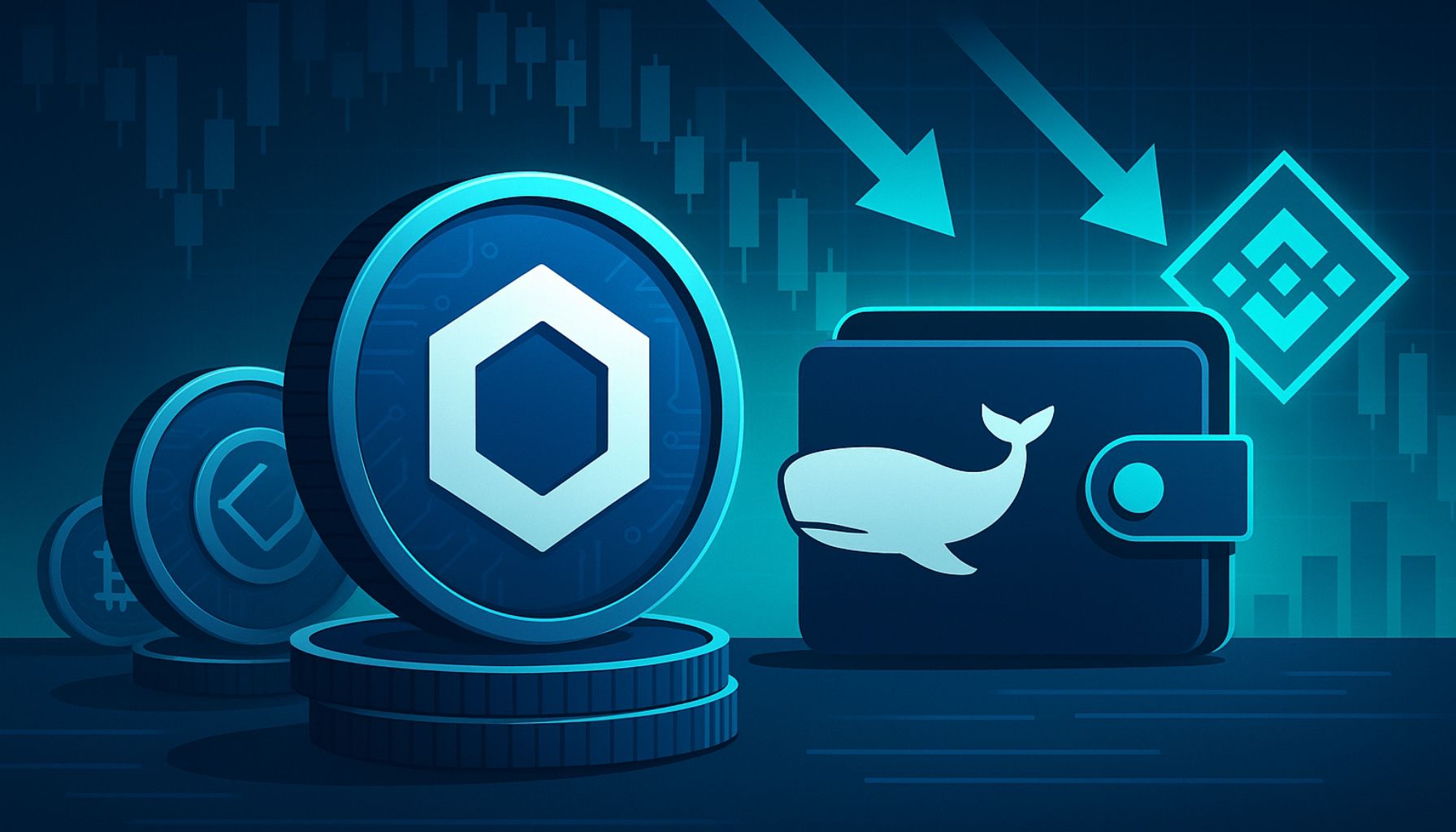
BitcoinWorld CLANKER Perpetual Futures: Unleash Exciting New Trading Opportunities on Coinbase The cryptocurrency world is buzzing with a significant announcement: Coinbase is set to list CLANKER perpetual futures . This move marks a pivotal moment for traders and the broader digital asset market, introducing a new derivative product on one of the most prominent exchanges. For anyone interested in expanding their trading horizons, understanding the implications of CLANKER perpetual futures is essential. What are CLANKER Perpetual Futures? Perpetual futures contracts are a type of derivative that allows traders to speculate on the future price of an asset without an expiry date. Unlike traditional futures, they do not expire, providing continuous trading opportunities. The listing of CLANKER perpetual futures on Coinbase means that traders will soon be able to take long or short positions on the CLANKER token, leveraging their capital to potentially amplify returns. This type of instrument is popular in crypto markets due to its flexibility and the ability to maintain positions indefinitely, as long as margin requirements are met. It offers a powerful tool for both hedging existing spot positions and speculating on price movements. Why is Coinbase Listing CLANKER Perpetual Futures a Game Changer? Coinbase’s decision to add CLANKER perpetual futures is a testament to the growing maturity and demand for sophisticated trading products in the crypto space. Here’s why this is a big deal: Increased Accessibility: Coinbase is a household name in crypto, making these futures accessible to a wider audience, including institutional investors and experienced retail traders. Enhanced Liquidity: Listings on major exchanges often lead to increased liquidity for the underlying asset, benefiting all participants. Market Validation: The inclusion of CLANKER on such a platform signals confidence in the project and its potential, potentially attracting more interest and investment. Diversification of Trading Strategies: Traders can now employ more complex strategies, such as arbitrage between spot and futures markets, or use futures for risk management. The introduction of CLANKER perpetual futures will undoubtedly reshape how many traders approach their portfolios, offering new avenues for profit generation and risk mitigation. Navigating the Opportunities and Risks of CLANKER Perpetual Futures While the prospect of trading CLANKER perpetual futures is exciting, it’s crucial to approach it with a clear understanding of both the opportunities and inherent risks. Derivatives trading, especially with leverage, can lead to substantial gains but also significant losses. Key Opportunities: Profit from Volatility: CLANKER, like many cryptocurrencies, can experience rapid price swings. Perpetual futures allow traders to capitalize on these movements, regardless of whether the market is going up or down. Leverage: Traders can open positions much larger than their initial capital, magnifying potential returns. However, this also amplifies losses. Hedging: Holders of CLANKER spot tokens can use perpetual futures to hedge against potential price drops, protecting their portfolio value. Important Risks to Consider: Liquidation Risk: Due to leverage, if the market moves against your position, your collateral can be liquidated quickly, resulting in total loss of your margin. Funding Rates: Perpetual futures contracts employ a funding rate mechanism to keep the futures price tethered to the spot price. These rates can either pay you or cost you, impacting your profitability over time. Market Volatility: While an opportunity, high volatility also means higher risk. Sudden price changes can trigger liquidations. It is always advisable to start with a small amount, understand the mechanics, and use risk management tools like stop-loss orders when trading CLANKER perpetual futures . What Does This Mean for the Crypto Market? The listing of CLANKER perpetual futures on a platform like Coinbase contributes to the ongoing institutionalization of the crypto market. As more sophisticated financial products become available, the market gains credibility and attracts a broader range of participants. This trend could lead to increased market efficiency and deeper liquidity across various digital assets. Moreover, it highlights the continuous innovation within the decentralized finance (DeFi) and broader crypto ecosystem. Projects like CLANKER gaining perpetual futures listings underscore their growing relevance and the demand for advanced trading tools around them. The future of crypto trading is evolving rapidly, and Coinbase’s embrace of CLANKER perpetual futures is a clear indicator of this dynamic shift. Traders should stay informed and educate themselves thoroughly before engaging in these advanced instruments. To learn more about the latest crypto market trends, explore our article on key developments shaping the digital asset space and institutional adoption. Frequently Asked Questions (FAQs) Q1: What are CLANKER perpetual futures? A1: CLANKER perpetual futures are derivative contracts that allow traders to speculate on the price of the CLANKER token without an expiration date. They enable users to take long or short positions with leverage, aiming to profit from price movements. Q2: When will Coinbase list CLANKER perpetual futures? A2: While Coinbase has announced its intention, specific listing dates for new products like CLANKER perpetual futures are usually communicated closer to the launch. Traders should monitor Coinbase’s official announcements for precise timing. Q3: Is trading CLANKER perpetual futures risky? A3: Yes, trading CLANKER perpetual futures , especially with leverage, carries significant risks, including the potential for rapid liquidation and substantial financial loss. It is crucial to understand these risks and employ robust risk management strategies. Q4: How do perpetual futures differ from traditional futures? A4: The primary difference is the absence of an expiry date. Traditional futures have a set settlement date, whereas perpetual futures can be held indefinitely as long as margin requirements are met. They also use a funding rate mechanism to keep their price close to the spot price. Q5: Will CLANKER perpetual futures be available to all Coinbase users? A5: Availability of derivatives products like CLANKER perpetual futures can vary by jurisdiction due to regulatory restrictions. Users should check Coinbase’s support pages or their local regulations to confirm eligibility. Q6: Where can I learn more about CLANKER? A6: To understand the underlying asset better, you can visit the official CLANKER project website (hypothetical link) or resources like Wikipedia’s cryptocurrency page for general context on digital assets. If you found this article insightful, please consider sharing it with your network! Help us spread awareness about the exciting developments in the crypto market by sharing on Twitter , LinkedIn , or other social media platforms. This post CLANKER Perpetual Futures: Unleash Exciting New Trading Opportunities on Coinbase first appeared on BitcoinWorld .
Bitcoin World
You can visit the page to read the article.
Source: Bitcoin World
Disclaimer: The opinion expressed here is not investment advice – it is provided for informational purposes only. It does not necessarily reflect the opinion of BitMaden. Every investment and all trading involves risk, so you should always perform your own research prior to making decisions. We do not recommend investing money you cannot afford to lose.
Solana, Litecoin and Hedera ETFs to Begin Trading This Week

Altcoin ETFs are landing this week, with Canary`s Litecoin and Hedera funds and Bitwise and Grayscale Solana ETFs set to begin trading. Bitcoin World

Alarming Data: Over a Million Talk to ChatGPT Mental Health About Suicide Weekly
BitcoinWorld Alarming Data: Over a Million Talk to ChatGPT Mental Health About Suicide Weekly The rapid advancement of artificial intelligence, particularly large language models like ChatGPT, has opened up new frontiers in technology. For those immersed in the cryptocurrency space, understanding the broader implications of AI is crucial, as it intersects with everything from trading algorithms to decentralized applications. However, a recent revelation from OpenAI casts a serious shadow on this progress, highlighting an alarming intersection of AI and human vulnerability: over a million people are reportedly engaging with ChatGPT mental health discussions about suicide every week. Understanding the Scope: The Alarming ChatGPT Mental Health Crisis OpenAI, the creator of the widely popular ChatGPT, recently disclosed startling data that brings the mental health challenges faced by its users into sharp focus. The company reported that approximately 0.15% of ChatGPT’s active users in a given week engage in conversations containing “explicit indicators of potential suicidal planning or intent.” With ChatGPT boasting more than 800 million weekly active users, this percentage translates to a staggering figure: over a million individuals weekly are confiding their deepest struggles, including suicidal thoughts, to an AI chatbot. The scope of mental health issues extends beyond suicidal ideation. OpenAI’s data also indicates a similar percentage of users exhibiting “heightened levels of emotional attachment to ChatGPT.” Furthermore, hundreds of thousands of people are showing signs of psychosis or mania in their weekly interactions with the AI. While OpenAI categorizes these types of conversations as “extremely rare,” their sheer volume underscores a widespread and critical issue that demands immediate attention from both developers and the broader public. OpenAI’s Response: GPT-5 Improvements and Enhanced AI Chatbot Safety In response to these pressing concerns, OpenAI has announced significant efforts to enhance how its models address users grappling with mental health issues. The company claims its latest work on ChatGPT involved extensive consultation with over 170 mental health experts. These clinicians reportedly observed that the updated version of ChatGPT, specifically GPT-5, “responds more appropriately and consistently than earlier versions.” Key improvements highlighted by OpenAI include: Improved Response Quality: The recently updated GPT-5 model delivers “desirable responses” to mental health inquiries roughly 65% more often than its predecessor. Enhanced Compliance for Suicidal Conversations: In evaluations testing AI responses to suicidal discussions, the new GPT-5 model achieved 91% compliance with OpenAI’s desired behaviors, a notable increase from the previous GPT-5 model’s 77%. Robustness in Long Conversations: OpenAI’s latest version of GPT-5 also demonstrates better adherence to safeguards during extended interactions, addressing a previous concern where safeguards were less effective in prolonged conversations. Beyond these technical upgrades, OpenAI is also implementing new evaluation methods to measure serious mental health challenges. Their baseline safety testing for AI models will now incorporate benchmarks for emotional reliance and non-suicidal mental health emergencies. Additionally, new controls for parents of child users are being rolled out, including an age prediction system designed to automatically detect children and apply stricter safeguards, aiming to improve overall AI chatbot safety . Navigating the Peril: OpenAI Suicide Concerns and Legal Challenges The gravity of the situation is further amplified by real-world incidents and legal challenges. OpenAI is currently facing a lawsuit from the parents of a 16-year-old boy who, tragically, confided his suicidal thoughts to ChatGPT in the weeks leading up to his suicide. This case underscores the profound and potentially devastating impact of unchecked AI interactions. Furthermore, state attorneys general from California and Delaware have issued warnings to OpenAI, emphasizing the company’s responsibility to protect young users of its products. These warnings come at a critical time, as they could potentially impact OpenAI’s planned restructuring. Amidst these developments, OpenAI CEO Sam Altman had previously claimed on X that the company had “been able to mitigate the serious mental health issues” in ChatGPT. The data released on Monday appears to be presented as evidence supporting this claim. However, a contradictory move by Altman, announcing that OpenAI would be relaxing some restrictions and even allowing adult users to engage in erotic conversations with the AI chatbot, raises questions about the company’s holistic approach to user well-being and the broader implications of OpenAI suicide prevention efforts. The Future of AI Mental Support: A Balancing Act While the reported GPT-5 improvements indicate a positive trajectory for AI safety, the path forward remains complex. OpenAI acknowledges that a “slice of ChatGPT’s responses” are still deemed “undesirable.” Moreover, the company continues to make its older, and by its own admission, less-safe AI models, such as GPT-4o, available to millions of its paying users. This raises concerns about the consistency of safety measures across its product offerings. The discussion around AI and mental health highlights a critical ethical dilemma: how can AI be developed to offer genuine AI mental support without inadvertently creating new risks? The potential for AI to provide accessible, immediate support is immense, especially in areas where human mental health resources are scarce. However, the data reveals a dark side, where users can become overly reliant or even led astray by AI’s responses. Conclusion: A Call for Vigilance in AI Development OpenAI’s recent data release serves as a stark reminder of the profound impact AI chatbots can have on human well-being. While the company’s efforts to improve its models, particularly GPT-5, are commendable, the sheer volume of users discussing severe mental health issues, including suicide, with ChatGPT necessitates continuous vigilance and transparent development. As AI becomes increasingly integrated into our daily lives, ensuring its responsible and ethical deployment, especially in sensitive areas like mental health, is not just a technical challenge but a societal imperative. The future of AI hinges on balancing innovation with unwavering commitment to user safety and ethical considerations. FAQs What is OpenAI’s latest data on ChatGPT and mental health? OpenAI reported that over a million of ChatGPT’s weekly active users discuss potential suicidal planning or intent, and hundreds of thousands show signs of emotional attachment, psychosis, or mania. How is OpenAI addressing these mental health concerns? OpenAI has consulted with over 170 mental health experts and implemented significant ChatGPT updates, particularly with GPT-5 , to improve response appropriateness and consistency. They are also adding new safety evaluations and parental controls. What are the improvements in GPT-5 regarding mental health responses? GPT-5 offers 65% more desirable responses and 91% compliance in suicidal conversation evaluations compared to previous versions. It also maintains safeguards better in long conversations. Are there any legal challenges related to ChatGPT ‘s mental health impact? Yes, OpenAI is being sued by the parents of a 16-year-old boy who confided suicidal thoughts to ChatGPT before his suicide. State attorneys general have also issued warnings. Who are some notable entities involved in the broader AI ecosystem mentioned in the context of events? Prominent entities include Google Cloud , Netflix , Microsoft , Box , a16z (Andreessen Horowitz), ElevenLabs , Wayve , Hugging Face , Elad Gil , and Vinod Khosla . To learn more about the latest AI chatbot safety trends, explore our article on key developments shaping AI models’ features. This post Alarming Data: Over a Million Talk to ChatGPT Mental Health About Suicide Weekly first appeared on BitcoinWorld . Bitcoin World











